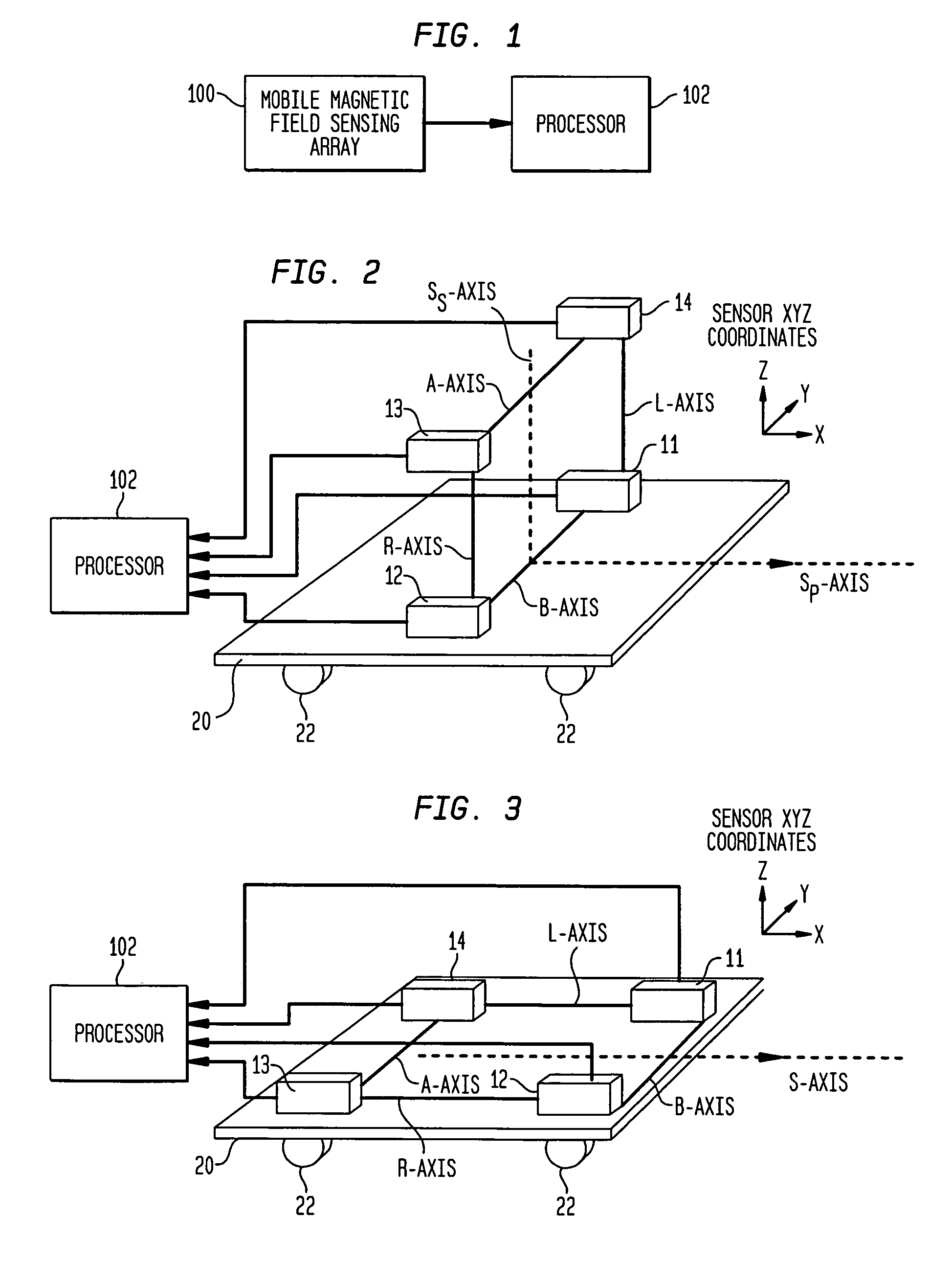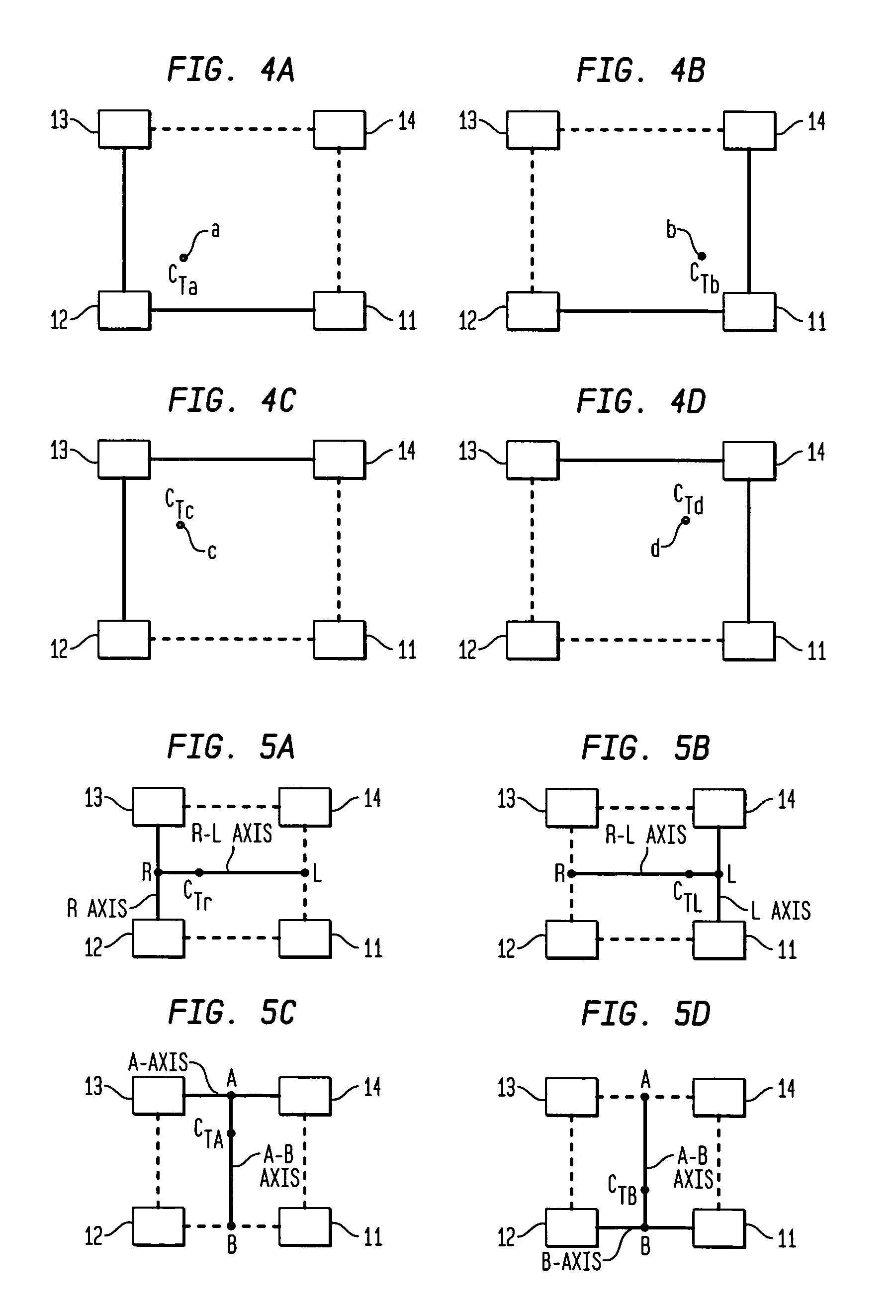Magnetic anomaly homing system and method using rotationally invariant scalar contractions of magnetic gradient tensors
a homing system and magnetic gradient technology, applied in the field of magnetic anomaly homing system and method, can solve the problems of reducing the effective range of the sensor, and limiting the mobile magnetic sensing ar
- Summary
- Abstract
- Description
- Claims
- Application Information
AI Technical Summary
Benefits of technology
Problems solved by technology
Method used
Image
Examples
Embodiment Construction
[0028]Prior to describing the present invention, a review of magnetic phenomena relevant to the design of magnetic sensor systems will be provided. Throughout this disclosure, vector quantities are denoted by boldface type and scalar quantities by normal type. In general, the design and operation of apparatuses and methods used for detection, localization and classification (DLC) of magnetically polarized objects depend on the following:
[0029](1) The existence of vector magnetic fields BA that emanate from the objects' net magnetization M. The BA fields constitute relatively small, short range “magnetic anomalies” within the Earth's background field.
[0030](2) The relatively large and locally nearly constant magnetic induction field of Earth (designated as BE) that permeates all space around the planetary surface. The BE field may induce much of an object's magnetic anomaly field. However, since the relatively small target anomaly field is convolved with BE, the Earth's field also co...
PUM
 Login to View More
Login to View More Abstract
Description
Claims
Application Information
 Login to View More
Login to View More - R&D
- Intellectual Property
- Life Sciences
- Materials
- Tech Scout
- Unparalleled Data Quality
- Higher Quality Content
- 60% Fewer Hallucinations
Browse by: Latest US Patents, China's latest patents, Technical Efficacy Thesaurus, Application Domain, Technology Topic, Popular Technical Reports.
© 2025 PatSnap. All rights reserved.Legal|Privacy policy|Modern Slavery Act Transparency Statement|Sitemap|About US| Contact US: help@patsnap.com



